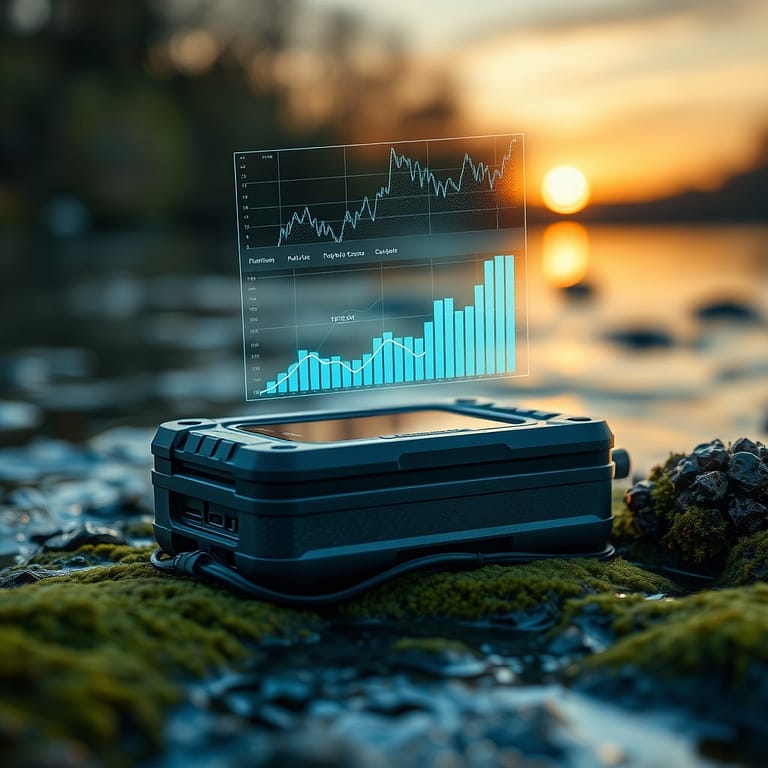In the ever-evolving world of international trade, the movement of goods across oceans is a cornerstone of global commerce. Yet, for many businesses, the process of how to track ocean freight remains shrouded in complexity and inefficiency.
How do you ensure the timely arrival of your cargo, manage unexpected delays, or gain insights into shipping performance? Well, those are the questions we will answer in this article.
Let’s delve into the essential elements of how to track ocean freight, exploring the technology that powers it, the challenges it addresses, and the transformative benefits it brings to businesses!
You may also like: Here’s the right way to track ships in the ocean
How to track ocean freight
At its core, tracking ocean freight involves monitoring the journey of a shipment from its origin to its destination. This is achieved through a combination of technologies that collect, process, and share data in real time.
Take a look at some of them below.

The Role of IoT Sensors
IoT (Internet of Things) sensors play a crucial role in modern freight tracking: these small, powerful devices are attached to shipping containers, pallets, or individual items. They collect data on location, temperature, humidity, and even shock impact, ensuring that goods are transported under the right conditions.
For instance, perishable goods like food or pharmaceuticals require strict temperature control. IoT sensors can alert stakeholders if conditions deviate from the set parameters, enabling corrective action before spoilage occurs.
Satellite and Cellular Connectivity
IoT sensors rely on robust communication networks to transmit data. Satellite systems are particularly useful for ocean freight, providing connectivity in remote maritime regions where cellular coverage is sparse.
These networks relay the position of a container in real-time, offering insights into its location even in the middle of the Pacific or Atlantic oceans.
Integration with GPS and AIS
Global Positioning System (GPS) and Automatic Identification System (AIS) technologies are integral to ocean freight tracking. While GPS pinpoints the location of individual containers, AIS tracks vessels’ movements, enabling stakeholders to monitor ship routes and predict arrival times accurately.
Together, these systems create a cohesive picture of the shipment’s journey, fostering transparency and accountability.
Traditional challenges of ocean freight tracking
Historically, tracking ocean freight relied heavily on manual processes and static data updates, such as email or phone communication with shipping lines. This approach often led to delays in accessing critical information and a lack of transparency in the supply chain.
Modern freight tracking solutions address these issues by:
- Reducing Dependency on Manual Inputs: Automated data collection ensures accuracy and timeliness.
- Providing Predictive Analytics: Advanced algorithms analyze historical data to forecast potential delays or disruptions.
- Enhancing Collaboration: Digital platforms facilitate seamless communication among shippers, freight forwarders, and end customers.
By addressing these pain points, businesses can improve efficiency and customer satisfaction while reducing the risk of costly errors and delivering tangible benefits that extend beyond operational efficiency.
The first of these benefits is cost savings; after all, real-time tracking reduces the likelihood of costly delays, detention charges, and misplaced shipments. With immediate access to location data, businesses can make adjustments to shipping plans and mitigate risks.
In an era where customers expect fast and transparent service, providing real-time updates on shipment status builds trust and loyalty, and this is another big advantage of modern ocean freight tracking. Businesses that embrace freight tracking gain a competitive edge by meeting and exceeding customer expectations.
Enhanced sustainability is another big factor. Data-driven insights help companies optimize shipping routes, minimize fuel consumption, and reduce their carbon footprint, contributing to a more sustainable supply chain.
On that same note, this helps regulatory compliance for industries that deal with hazardous or regulated goods. As you can read in this other guide we’ve done, tracking technology ensures compliance with international laws and standards, reducing the risk of penalties and reputational damage.

The need for real-time visibility
Ocean freight accounts for more than 80% of global trade by volume, making it a critical lifeline for industries across the world. However, its sheer scale and inherent complexity pose challenges for stakeholders.
Without a reliable tracking system, companies risk losing valuable time and money due to delays, miscommunications, or misplaced shipments. Real-time visibility into the status of shipments isn’t just a luxury – it’s necessary to maintain operational efficiency, meet customer expectations, and reduce costs.
Tracking ocean freight offers a way to navigate these challenges, providing data-driven insights that empower businesses to make informed decisions throughout the shipping process.
The future of freight tracking
As technology continues to evolve, so does the potential of freight tracking. Artificial intelligence (AI) and machine learning (ML) are set to revolutionize the field by offering even greater accuracy and predictive capabilities.
AI-powered systems can analyze weather patterns, port congestion data, and historical shipping performance to recommend the most efficient routes. Blockchain technology, meanwhile, is being explored for its ability to create immutable records of shipping data, enhancing security and trust in global supply chains.
For businesses aiming to leverage the benefits of ocean freight tracking, selecting the right partner is crucial. The ideal solution should integrate seamlessly with existing operations, offer scalability, and prioritize data security.
While the journey of adopting freight tracking technology may seem daunting, the rewards are well worth the effort. Businesses that invest in these solutions position themselves as industry leaders, capable of navigating the complexities of global trade with confidence and precision.
How to track ocean freight with the right partnership

Tracking ocean freight is no longer a futuristic concept, but a vital component of modern logistics. By harnessing the power of IoT sensors, GPS, satellite connectivity, and predictive analytics, businesses can achieve unparalleled visibility into their supply chains.
For those looking to transform their freight operations, the key lies in embracing the technology that drives efficiency, transparency, and sustainability. And for that, working alongside a company that specializes in the integration of IoT technology is crucial.
For that, we here at Datanet IoT specialize in delivering innovative IoT solutions that empower businesses to take control of their logistics. Whether you’re a seasoned player in international trade or exploring ocean freight for the first time, our expertise can help you unlock new possibilities.
So get in contact today and explore the future of freight tracking with us – because in today’s fast-paced world, staying ahead starts with knowing where your cargo is at every moment.






